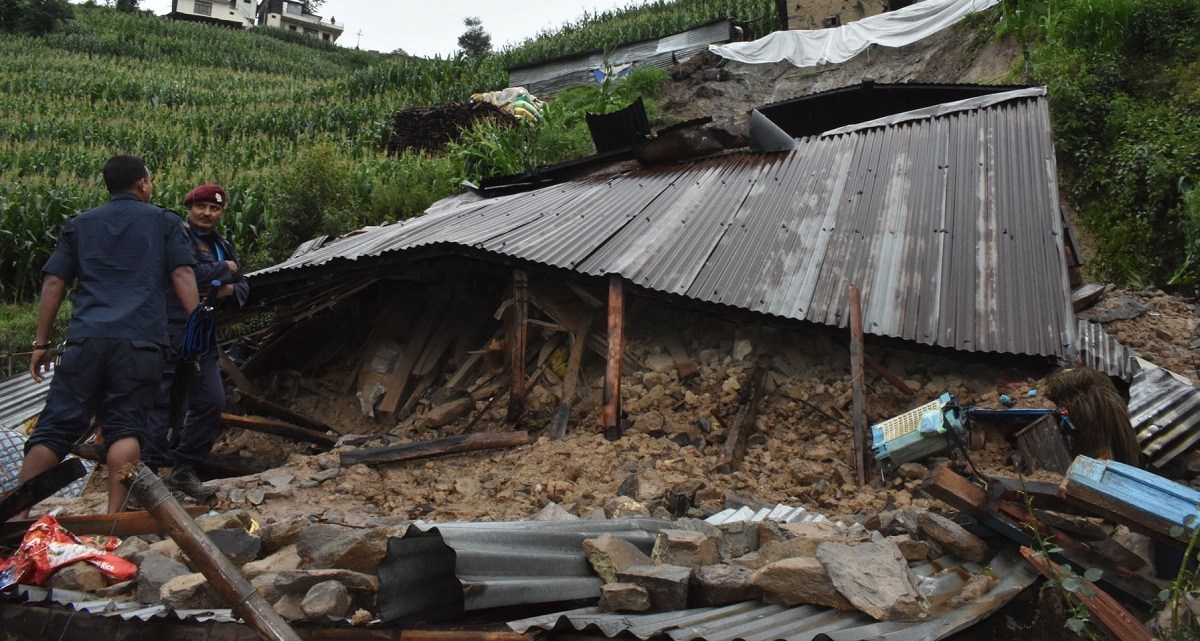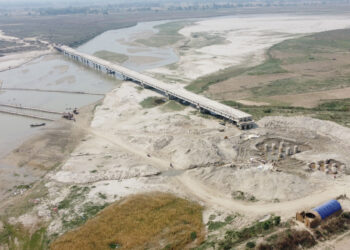KATHMANDU: As many as 184 people have lost their lives from floods and landslides this monsoon.
According to the National Risk Reduction and Management Authority (NRRMA) sources, a total of 184 people have died whereas 54 have gone missing in various instances of flood and landslides that got instigated after this year’s monsoon.
According to Janardan Gautam, the spokesperson of NRRMA, the landslide-triggered by the incessant rainfall that started with the arrival of this year’s monsoon has claimed 179 lives and has also caused the disappearance of 43 people till date.
Since the start of this year’s monsoon since July 12, five people have lost lives whereas 11 have gone missing due to floods.
Spokesperson Gautam informed that the Authority has been collecting district-wise data of rescue and relief works through the National Emergency Operation Center (NEOC).
“We have mobilized the security forces from the district and local levels for the rescue and relief work,” he said, “Provided they need the help from the center, these agencies send information to NEOC and the Ministry of Home Affairs and NRRMA address the issue.”
NDMF spends the fund on rescue and relief
According to Gautam, National Disaster Management Fund (NDMF) has Rs 1.53 billion in its account on the date.
The local levels also allocate a certain amount for disaster control and rescue and relief works. Besides, the fund comes from the district and province authority as well.
Generally, the fund is used to offer relief or compensation for those who lose their relatives or family members. It is also used for the medication, rehabilitation of the rescue and relief work in a disaster situation.
The government has been offering Rs 100 thousand each to the family of the person who has lost their lives in a disaster.
The government has been providing Rs 10 thousand to a hundred thousand rupees to the disaster-affected people considering the loss or damage caused by it.
“The government has been providing Rs 15 thousand to the family of 5 with no food and shelter whereas the family with more members gets Rs 20 thousand as relief,” he informed.
He further informed that if a family has lost 5 members in the disaster, the family is paid Rs 200 thousand for the first member whereas Rs 100 thousand each is paid as for the remaining 4 as the relief as mentioned in the disaster relief standard set by the authority.
SMS used to alert against the disaster
Mohan Basnet, an inhabitant of Gaurishwor Rural Municipality, Dolakha received an SMS at 9 PM on Thursday.
“The water level of Tamakoshi river has risen at Gangor, Jagat, Singati, and Bati measurement centers due to the incessant rainfall at Tamakoshi watershed area lying in Dolakha district,” the SMS read, “Everyone living in the riverbed of Tamakoshi and other small rivers of Dolakha is notified to remain alert and safe.”
The message made Basnet alert and taking his family members he went to his relatives living away from the riverside.
As his house was at the riverbed, Basnet shared the message to other people living on riverside like him.
“As we got the alerting message prior to the flood and landslide, we managed to save our lives,” he spoke elated, adding, “If we get such early warnings, we can reach safe shelters.”
The Department of Hydrology and Meteorology has been sending alert messages to the residents living in vulnerable areas.
The Department claims that it has sent alert messages to more than 600 thousand people of vulnerable areas.
Disaster Management Preparedness not enough, stay alert
The monsoon had faded in the last week of August. Provided it does the same this year, it is likely to be active for three more weeks.
According to Dr. Dharma Raj Upreti, a disaster management expert, the monsoon which has been very active since Saturday has made many parts of Sudurpaschim Province vulnerable from a disaster point of view.
Upreti points out that in comparison to the developed countries, Nepal has still much to do in the sector of the disaster management preparedness sector.
“Department of Hydrology and Meteorology shares information about the places where the rainfall may occur, yet, the detailed information about the blockade of sewage or the people trapped and requiring instant rescue is still to be included in the information,” he added.
According to him, most of the monsoon puts the high hills in one type of high risk whereas the areas of low regions become vulnerable for flood and inundation.
“The incessant rainfall has caused the water level rise even in small rivers, the people living on riverbed areas are highly vulnerable now,” he said, “The people living in the bank of the rivers of Karnali, Mohana, Koshi, Kankai, Rapti, Kamala, etc are in high risk of flood.”
“The river works as the bearer of the landslide, the flood has a high intensity which makes areas around more vulnerable for inundation, such flood destroys the cultivation as well,” Upreti explained.
The experts say that there is a thresh hold of 30 milliliters in an hour, 80 milliliters in 3 hrs, 100 milliliters in 6 hrs, 120 milliliters in 12hrs and 140 milliliters in 24 hrs.
Yet, hundreds of people still lose their lives due to insufficient information and inefficient information system.









Comment